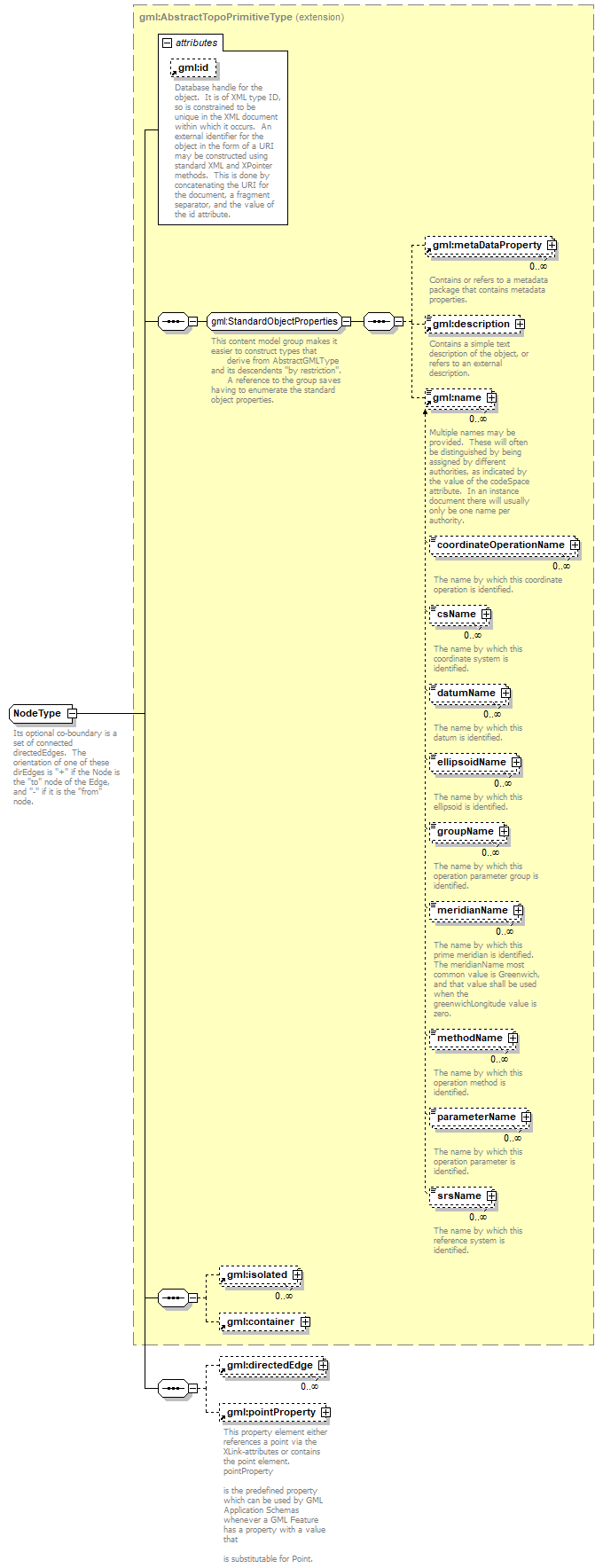| diagram |  |
||||||||||||||
| namespace | http://www.opengis.net/gml | ||||||||||||||
| type | extension of gml:AbstractTopoPrimitiveType | ||||||||||||||
| properties |
|
||||||||||||||
| children | gml:metaDataProperty gml:description gml:name gml:isolated gml:container gml:directedEdge gml:pointProperty | ||||||||||||||
| used by |
|
||||||||||||||
| attributes |
|
||||||||||||||
| annotation |
|
||||||||||||||
| source | <xs:complexType name="NodeType"> <xs:annotation> <xs:documentation>Its optional co-boundary is a set of connected directedEdges. The orientation of one of these dirEdges is "+" if the Node is the "to" node of the Edge, and "-" if it is the "from" node.</xs:documentation> </xs:annotation> <xs:complexContent> <xs:extension base="gml:AbstractTopoPrimitiveType"> <xs:sequence> <xs:element ref="gml:directedEdge" minOccurs="0" maxOccurs="unbounded"/> <xs:element ref="gml:pointProperty" minOccurs="0"/> <!-- <element name="geometry" type="gml:PointPropertyType" minOccurs="0"/> --> </xs:sequence> </xs:extension> </xs:complexContent> </xs:complexType> |
XML Schema documentation generated by XMLSpy Schema Editor http://www.altova.com/xmlspy